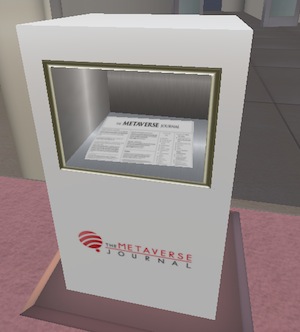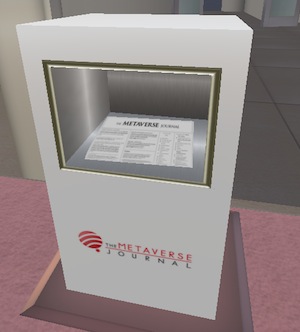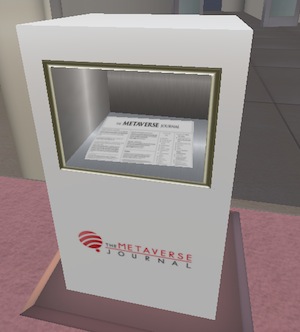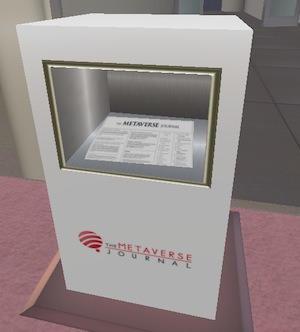 1. The Drum (UK) – Yomego set to enter virtual world with Horrible Histories. “Children’s book publisher Scholastic has commissioned social media company Yomego with the developed of a virtual world for its Horrible Histories series. The Horrible Histories virtual world is planned to go live in June 2011 and will allow fans of the book series the chance to interact with the historical world it has built over the years. A series of ‘rooms’ based on key historical periods, including Rotten Rome, Awesome Egypt and Terrible Tudor London are planned, with children being allowed to create their own avatar when they enter. They will then be able to explore each world and discover the ‘nasty bits’ of history within them and interact with other avatars.”
1. The Drum (UK) – Yomego set to enter virtual world with Horrible Histories. “Children’s book publisher Scholastic has commissioned social media company Yomego with the developed of a virtual world for its Horrible Histories series. The Horrible Histories virtual world is planned to go live in June 2011 and will allow fans of the book series the chance to interact with the historical world it has built over the years. A series of ‘rooms’ based on key historical periods, including Rotten Rome, Awesome Egypt and Terrible Tudor London are planned, with children being allowed to create their own avatar when they enter. They will then be able to explore each world and discover the ‘nasty bits’ of history within them and interact with other avatars.”
2. Courthouse News Service (USA) – Players Want Real Money from Virtual World. “Linden Research, creator of the massive multiplayer “Second Life” Internet game, induced thousands of players to invest as much as $100 million in real money in “virtual” properties, then took the properties back without just compensation, four former players say in a federal class action. Plaintiffs Carl Evans, Donald Spencer, Valerie Spencer and Cindy Carter say that throughout the early 2000s the company and its founder, Phillip Rosedale, promoted the concept of property ownership and commerce in Second Life through press releases and media interviews. Linden Research and Rosedale claimed they would protect rights to virtual property and that the virtual real estate could be used to earn money for its owners.”
3. nebusiness (UK) – Firms explore world of virtual conferencing. “Thanks to the lingering volcanic ash cloud from Iceland, many European business leaders have found themselves struggling to attend meetings as planned. This unusual source of disruption has led Gateshead-based business Vector76 to encourage firms to explore the possibility of meeting in the virtual world. The company was set up two years ago to explore the development of the 3D internet, especially virtual worlds such as Second Life. Vector76 set up a virtual NewcastleGateshead last year, and CEO Shaun Allan says the recently-launched conferencing facilities are ideal for deal-makers who have found their operations grounded by the lack of movement in the real world.”
4. The Guardian (UK) – Creating the next dotcom boom could be child’s play. “Anyone expecting one of the figures behind the world’s most popular online game, the sword and sorcery epic World of Warcraft, to serve up another instalment of blood, guts and glory with his latest online venture is going to be in for a shock when his new project goes live next week. There’s no fighting in the world of Boaki, there are no items to trade and players must collaborate as they try and solve the mystery of what happened to the previous inhabitants of their strange new world. But the most striking difference is that the new “game” is aimed specifically at children.”
5. The Age (Australia) – Split Screen: Lost in the sandbox. “Open world” is one of those phrases popular with games marketing people today. Games promise freedom, non-linear stories, with a unique experience for every player, a “sandbox” for everyone to play in and create their own fun. While the creation of convincing virtual worlds that encourage exploration and experimentation is a great goal, and one toward which games have made huge strides in the past decade, it has inherent risks. The big one, I think, is a phenomenon I call “too much world, too little game”. This describes a game which features a big world, but puts too little in it for the player to do, or puts in too many of the same activities with too little variety.”
6. Honolulu Weekly (USA) – Life on Mars. “Jim Sink is the CEO of Avatar Reality, a locally–based gaming company. Its first game is Blue Mars, a 3D virtual world that will remind you of Second Life at first glance but aims to be the next generation of virtual worlds. Before working with Avatar Reality, Sink worked at Microsoft’s Xbox Live division and managed business development at Foundation9, the world’s largest producer of independent video games. Honolulu Weekly sat down with Sink to talk about some of his projects and the state of the high-tech industry in Hawaii. In short: things are not heading in the right direction.”
7. Kotaku (Australia) – Identity And Online Avatars: A Discussion. “Gamers are beautiful, so think of this as a love letter to you. I love how we can circle the wagons when the medium we care for so much is assailed. So, let me tell you directly: my goal is to support your creativity in gaming and other digital media forms. In recent days, I had the pleasure of being interviewed by Elisabeth Soep for boingboing.net on the topic of research into identity representation that I have been conducting. This article, “Chimerical Avatars and Other Identity Experiments from Prof. Fox Harrell,” also had the distinction of having been reblogged on Kotaku under the sensationalistic headline “Making Avatars That Aren’t White Dudes Is Hard.” I am thrilled to see the dialogue started by my fellow denizens of gamerdom, however the title and article misstated my aims. ”
8. PopMatters (USA) – T.L. Taylor’s Guide to MMO Culture. “One of the most interesting shifts in MMO design compared to single player gaming is moving from an emotion centered design to something oriented around social spaces. Rather than focusing on making a game fair and fun for one person, you have to orient it around thousands. T.L. Taylor’s book Play Between Worlds is a careful study on the effects of design in Everquest over an extended period of time. Detailing her observations as a Gnome Necromancer, the book relies on academic research and interviews to paint a broad picture of how the design of the game interacts with the culture.”
9. iTWire (USA) – Would you pay US$3.5 million for a virtual horse? “Well (as a collective) plenty have, the World of Warcraft Celestial Steed hit the virtual fantasy universe created by Blizzard, and lots of Warcraftians were willing to jump in the saddle. The Celestial Steed mount and Lil’XT Pet (!) went on sale over at Blizzard from the 16th of April (or 15th depending on where you live), and it seems that folks that fossick around in World of Warcraft are pretty sick and tired of their current modes of transport, and want to try the new. At a price of US$25 the queue to download the Celestial Steed alone was 140,000 and seven hours long at launch. This is a nice windfall of US$3.5 million for the Blizzard massive multiplayer juggernaut.”
10. Computerworld (USA) – Linden Lab holds to grand plans for Second Life. “Linden Lab’s plans for Second Life are as visionary as ever — “to enhance and improve the human condition.” But the company is working to marry those dreams to more practical goals for the immediate future. “I’ll settle for a million active users by the end of the year,” said Tom Hale, chief product officer for Linden Lab, which develops and operates Second Life. The service now has about 700,000 active users, who spend more than an hour per month logged in, up from 680,000 active users in February. One million active users is a big goal, but it’s more modest than the dreams of the Second Life boom a few years ago, when Linden Lab founder Philip Rosedale talked about Second Life becoming bigger than the Web in 10-15 years. For example, see this 2008 video of Rosedale at TED Talks.”

 1. Computerworld (USA) –
1. Computerworld (USA) – 



Recent Comments